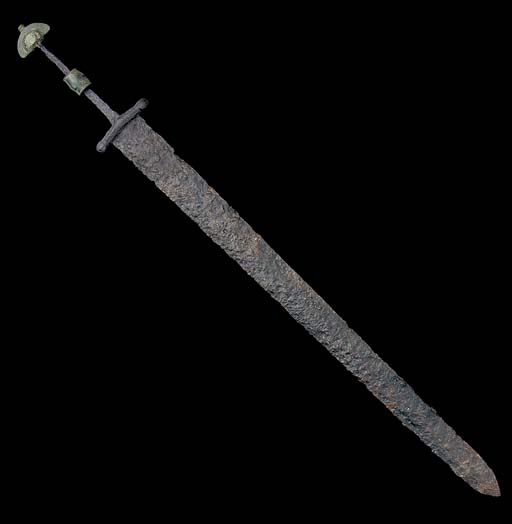| Hank Reinhardt wrote: |
| If there is any one thing I have learned in over 60 years study of arms and armour, it is that there are no unbreakabloe rules or that such swords never existed until--------. .... Two hand and hand and a half swords sure were not common, nor do we have any examples, but I would not go so far as to say that no one ever used one. (posted example is exluded until age and source is verified.) |
Hank,
That's a great point. We simply don't know enough a lot of these topics to talk in absolutes. I doubt they were common as well, but there's archeological and pictorial evidence that places them at the scene of the crime, so to speak. I guess we're all just waiting for the next big discovery to tell us more information. :)
As another example, there is a Type XIIIa in Records of the Medieval Sword (Type XIIIa.11) whose faceted wheel pommel is very similar to swords found in Viking graves by Dr. Leppaaho. Its cross is very much a gaddhjalt style. Its blade is long enough for Type XIIIa classification, but is more similar to Type XI blades. Oakeshott dates it "? Early for this type c.1200-50 - or 100-50, more likely." That doesn't put it into the typical Viking era, by any means, but it does show strong similarities to pommel and blade forms used in the Viking Age and it is an earlier example of a great sword than we typically find. Is it an aberration or incorrectly dated? Or are there more of these waiting to be discovered that will blow our notions out the door? Who knows? Fascinating to think about, though, isn't it? :)
